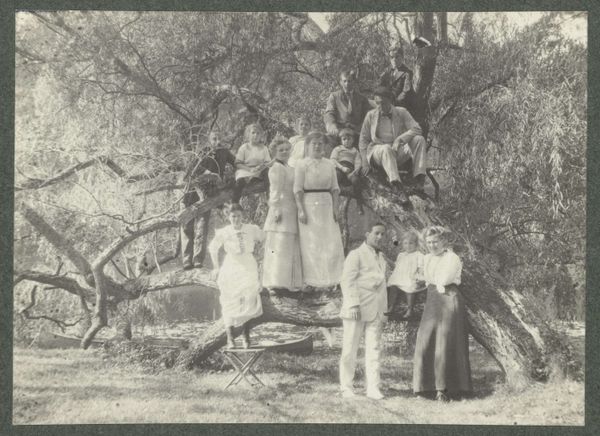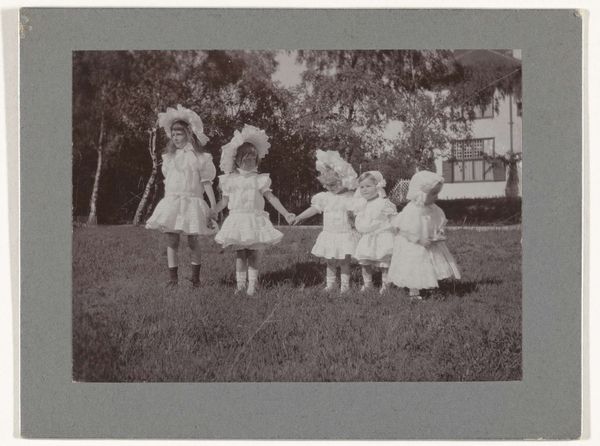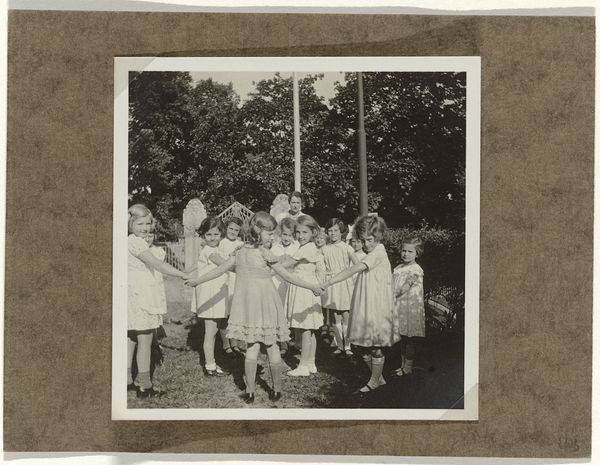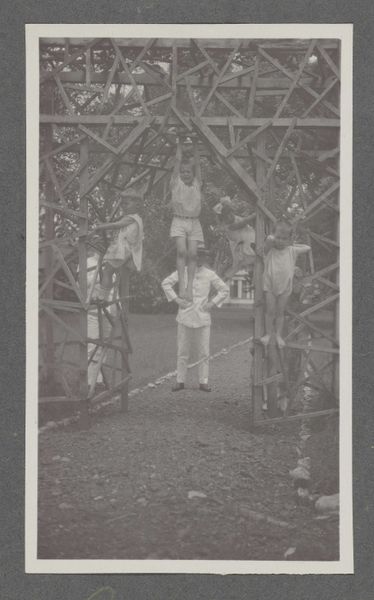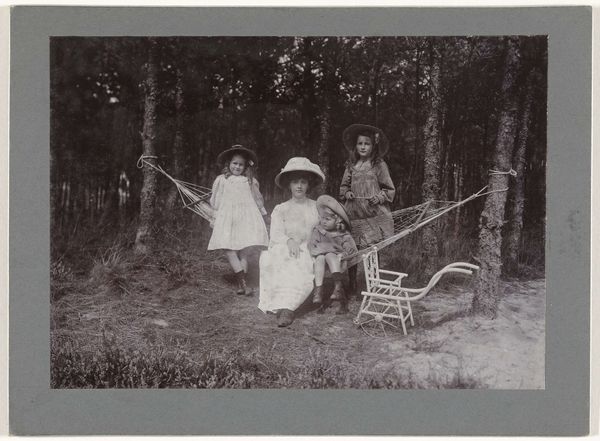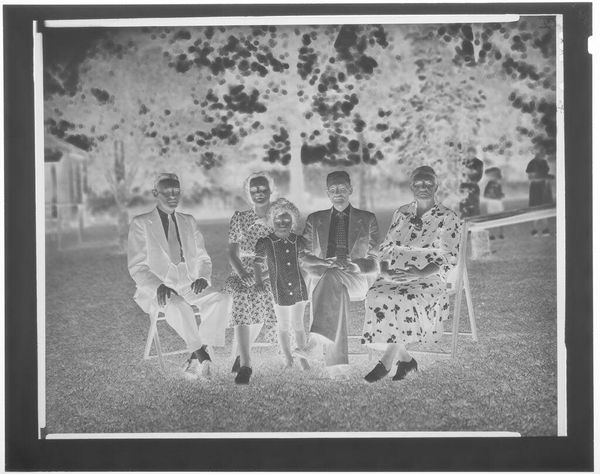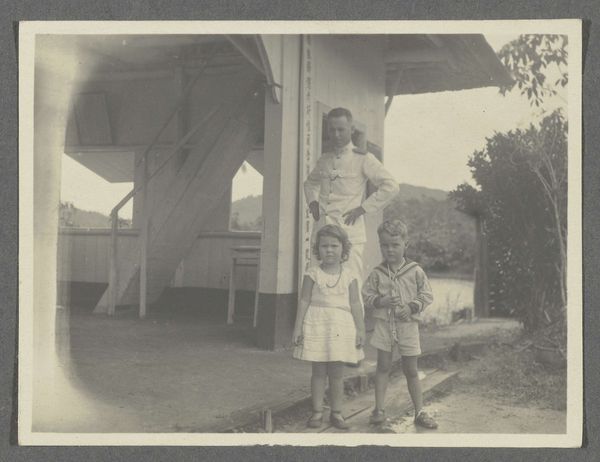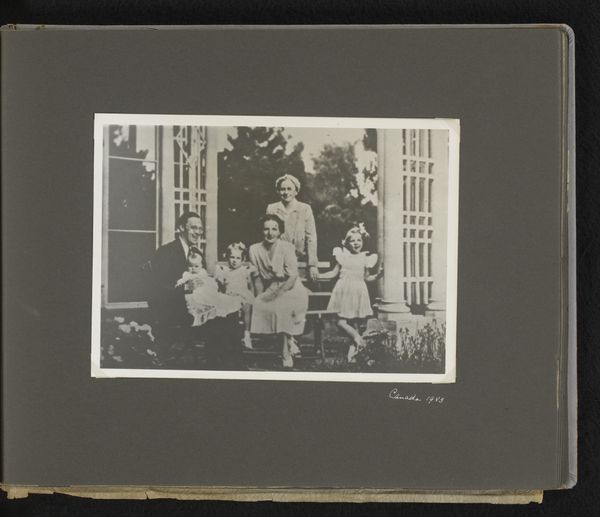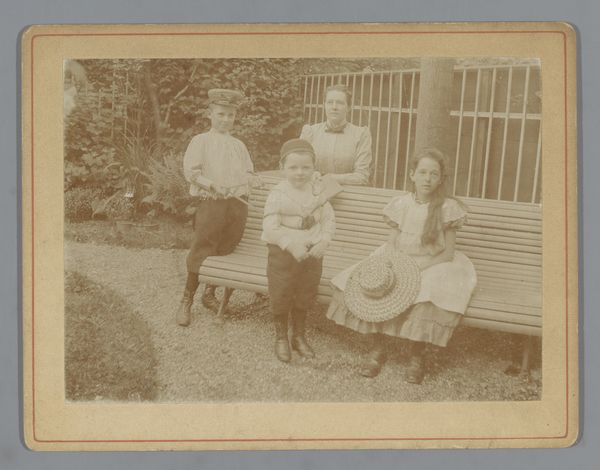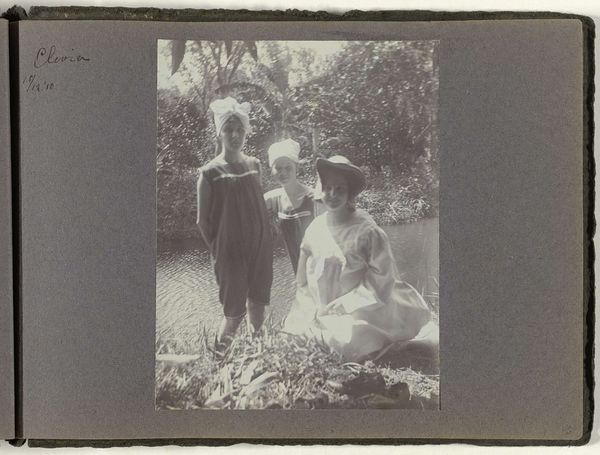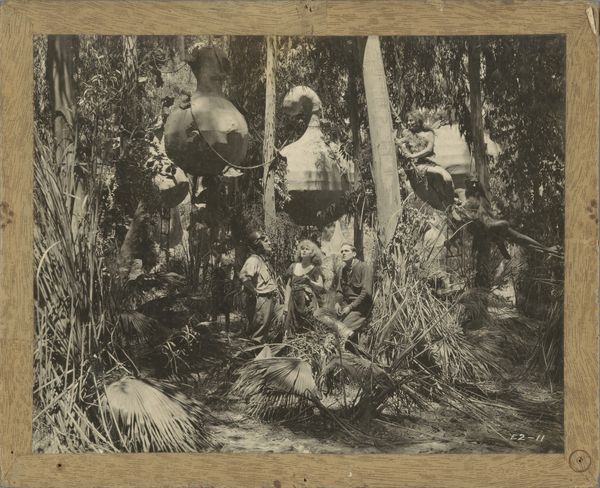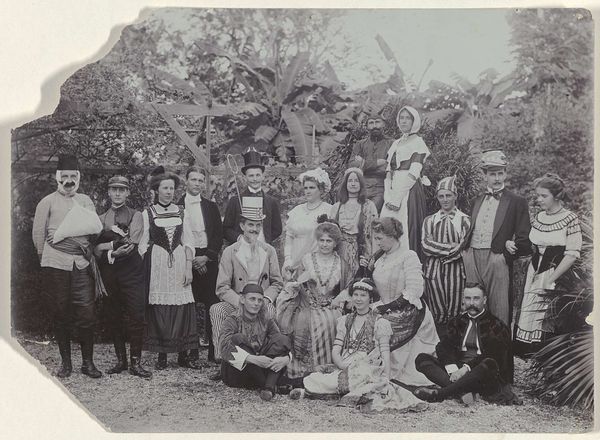
photography, gelatin-silver-print
#
portrait
#
photography
#
child
#
gelatin-silver-print
#
genre-painting
#
realism
Dimensions: height 63 mm, width 107 mm
Copyright: Rijks Museum: Open Domain
Curator: Let's take a moment to appreciate this photograph, "Vier kinderen hand in hand voor een houten hekwerk in Batoedjadjar," created in 1924 by Klaas (I) Kleiterp. It's a gelatin-silver print. Editor: My first impression is of something quite rigid and contained. The wooden structure looms almost protectively, and yet, it feels like a cage of sorts behind those small, solemn faces. Curator: It is interesting to reflect on the location named in the title and the date the image was captured. Batoedjadjar was situated in the Dutch East Indies, now Indonesia, when this image was taken. Considering the realities of Dutch colonialism during that time and in that location, I think the photograph opens questions of identity and belonging in a space marked by power dynamics. These children are posed within the carefully crafted framework that could either denote privilege or restriction. Editor: I see that too. And yet, consider how children often appear in photographic portraits: arranged like symbolic emblems. Look at their clothing--it evokes certain values attached to cleanliness, social positioning. The image has layers. The gesture of holding hands evokes innocence and solidarity but the wooden beams and overall monotone add complexity and darkness to what appears to be a straightforward image of childhood. It's almost a stage set for deeper psychological readings. Curator: Indeed. How do these carefully chosen symbols intersect to communicate something deeper about representation? The children's fixed stares, hand-in-hand—are they performative, or a display of imposed togetherness under colonial forces? Are they embodying a staged narrative or offering something genuine, like solidarity? Editor: I think it is important to reflect on childhood itself as a symbolic territory here. Childhood often represents a concept—innocence, potential—as opposed to an experienced reality. When an image of a child emerges, we should remember that a culturally constructed symbol is presented. And these specific children—pictured in this way, against the latticed backdrop, become powerful conduits for meaning. Curator: Absolutely. Kleiterp’s image, viewed through our contemporary lens, becomes a fascinating focal point for these discourses on visibility and experience. Editor: Precisely! This artwork offers more than what initially meets the eye. It is a springboard for considering the role of symbols and their historical baggage when recording any image.
Comments
No comments
Be the first to comment and join the conversation on the ultimate creative platform.
